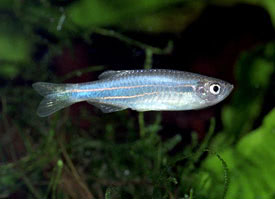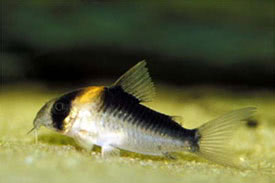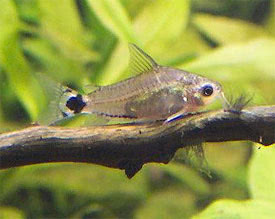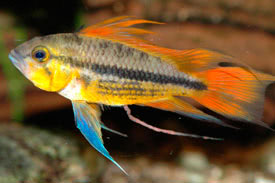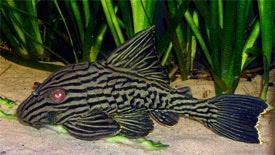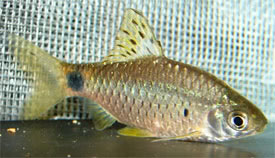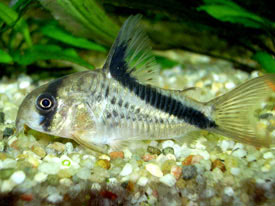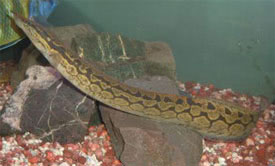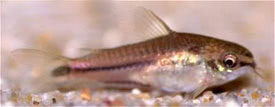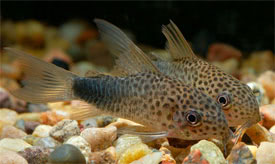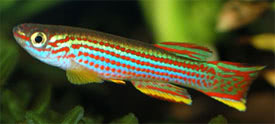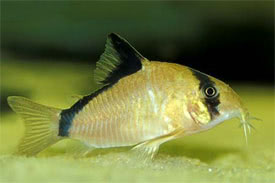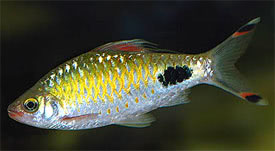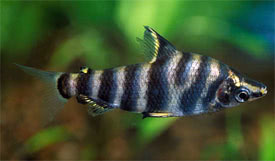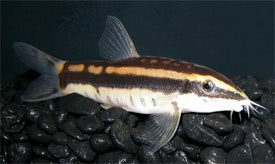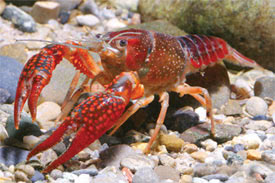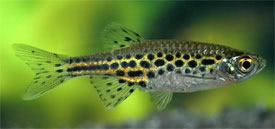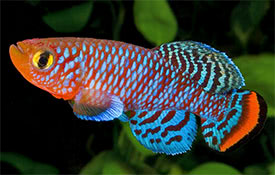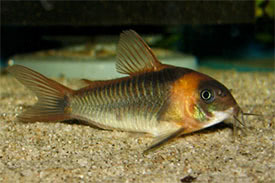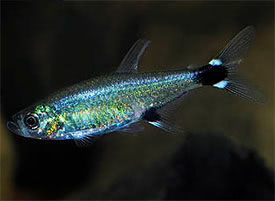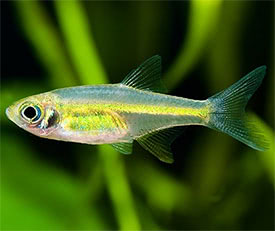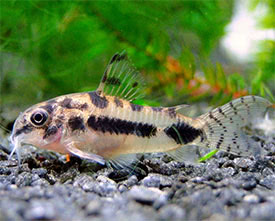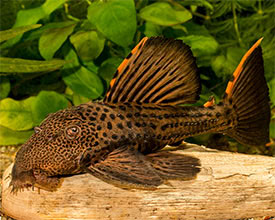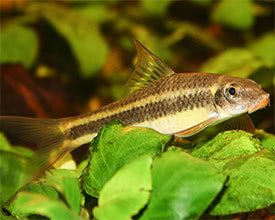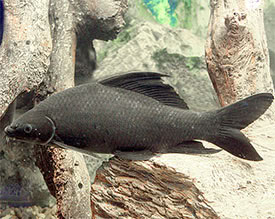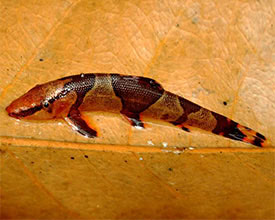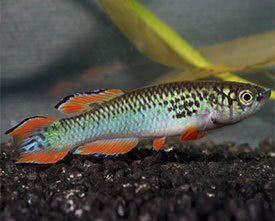
 Magyarul / Hungarian
Magyarul / Hungarian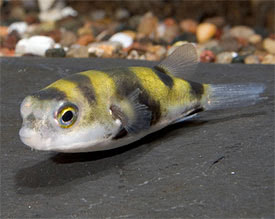
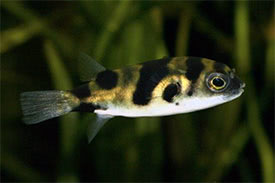

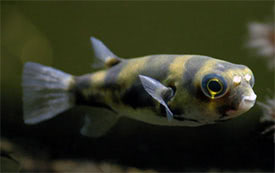
- Scientific name: Colomesus asellus
- Synonyms: Cheilichthys asellus (Müller & Troschel, 1849)
- Common name: Amazon puffer, South American Puffer
- Group: Other fishes
- Habitat: South America; Occurs in the Amazon river basin in Brazil, Colombia, Peru, Ecuador, Guyana and Venezuela
- Size: 7-8 cm
- Biotope: It is very adaptable and can be found from the fast-flowing rapids to Amazon delta regions usually in waters with high oxygen levels, although it does not tend to be found in highly acidic black-waters.
- Social behavior: Not specifically aggressive, but it can be nippy, so it is best kept in a single species set-up. In the nature they form loose groups, so they should be kept in a small group of at least 6 species in the aquarium.
- Diet: Carnivorous; Snails, shellfish and worms are accepted. They eat live and frozen meaty foods in the aqaurium.
- Breeding: It has not been bred in captivity.
- Tank: Minimum 55 litres
- Population: 5-6 fish for 250 litres
- Decoration: Lots of aquatic plants and roots to provide cover and hiding places, and also sufficient swimming space is required. Floating plants are recommended as they diffuse the light, and the fish usually become more active and bolder. They also like water movement, so an additional powerhead is recommended.
- Temperature: 20-26 °C
- pH: 6-8
- Hardness: 2-16 NK°
- Lifespan: 10 years
Description: Colomesus asellus have a golden cast to the upper parts of their bodies getting lighter and whiter on the underside, and the belly area is white. There are several dark bold bands on their back. The most prominent identification of this puffer is a large dark spot on the caudal peduncle, which is absent on its much larger relative, the Banded Puffer (Colomesus psittacus). In the wild Colomesus asellus can reach 12-13 cm in length, but they usually smaller in aquaria. Wild fish can be delicate and sensitive to white spot desease, so a lengthy quarantine period may be required. They should be kept in small groups, as they get shy and nervous when kept solitary, in contrast when kept in groups these fish are restless and active swimmers. During the night all the pufferfish coming together to sleep in the same corner of the tank.
Puffers can inflate their stomachs with water or air, and become 2 or 3 times their normal size when stressed or threatened, so can easily scare away many potential predators. Like most puffers the Amazon puffer is very sensitive to bad water conditions like nitrates and ammonia, so regular partial water changes, and an overfiltered aquarium are essential. Colomesus asellus lack true teeth, the jawbone modified into four toothlike structures which grow continuously and surprising quickly, so hard shelled foods such as shellfish and snail diet can help to grind their teeth down. If their teeth become overgrown they will not be able to eat and will die soon.
There is no known sexual dimorphism, and South American puffers have not been bred in captivity. Colomesus asellus breed in the same sort of way as most marine puffers, producing large numbers of relative small eggs which are scattered in open water, and exhibit no parental care. Spawning occurs in main river channels or close to banks at the mouths of floodplain lakes during the wet season, when the water levels are higher. The eggs and the planktonic fry are washed into calm zones in floodplain lakes where they complete their development, and return to the main river channels when the flood waters recede. They grow slowly, and might not reach sexual maturity until they are a couple of years old.





















